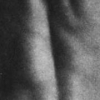Free Online Productivity Tools
i2Speak
i2Symbol
i2OCR
iTex2Img
iWeb2Print
iWeb2Shot
i2Type
iPdf2Split
iPdf2Merge
i2Bopomofo
i2Arabic
i2Style
i2Image
i2PDF
iLatex2Rtf
Sci2ools
ICCV
1998
IEEE
1998
IEEE
Shading Primitives: Finding Folds and Shallow Grooves
Diffuse interreflections cause effects that make current theories of shape from shading unsatisfactory. We show that distant radiating surfaces produce radiosity effects at low spatial frequencies. This means that, if a shading pattern has a small region of support, unseen surfaces in the environment can only produce effects that vary slowly over the support region. It is therefore relatively easy to construct matching processes for such patterns that are robust to interreflections. We call regions with these patterns "shading primitives." Folds and grooves on surfaces provide two examples of shading primitives; the shading pattern is relatively independent of surface shape at a fold or a groove, and the pattern is localised. We show that the pattern of shading can be predicted accurately by a simple model, and derive a matching process from this model. Both groove and fold matchers are shown to work well on images of real scenes.
Computer Vision | Fold Matchers | ICCV 1998 | Interreflections Cause Effects | Low Spatial Frequencies | Surfaces Produce Radiosity | Unseen Surfaces |
| Added | 15 Oct 2009 |
| Updated | 31 Oct 2009 |
| Type | Conference |
| Year | 1998 |
| Where | ICCV |
| Authors | John A. Haddon, David A. Forsyth |
Comments (0)

